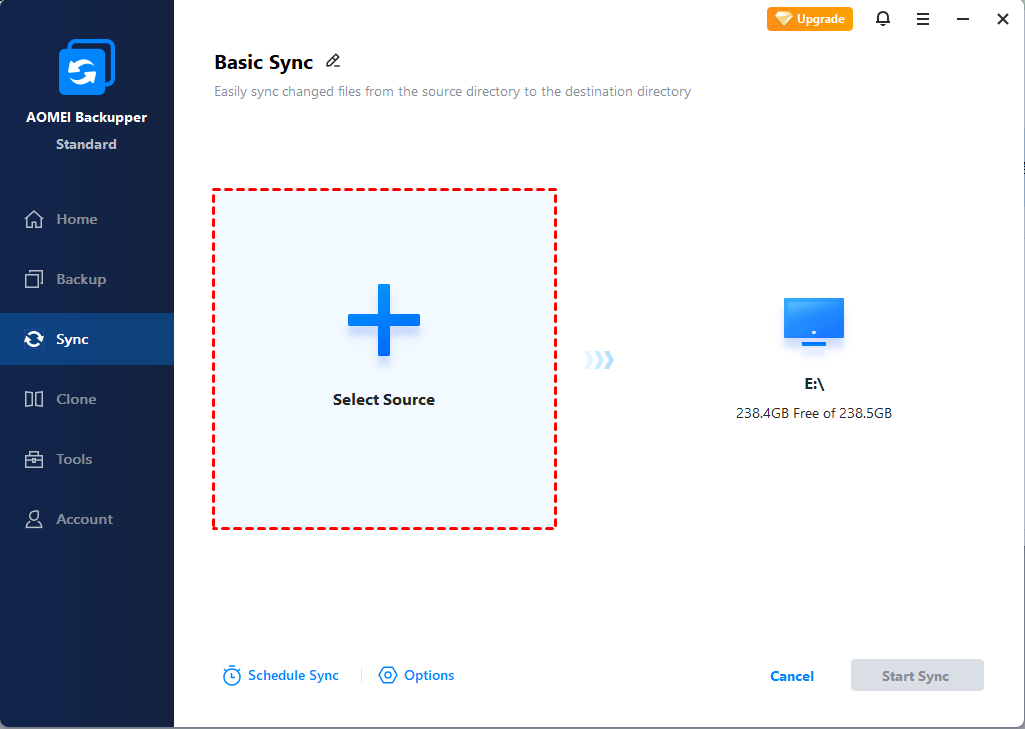Network Drive Not Syncing on Windows 10 | Fixes and Alternative
If you are unable to sync files via network drive, you can refer to the below article. Reasons and solutions are here, and one free and reliable syncing alternative is given for you.
Why does Windows 10 Sync Center stop working?
Windows 10 issues often come with viable solutions, and there's no need to panic. The problem of network drive not syncing Windows 10 can be resolved through feasible methods outlined in this comprehensive guide. The guide not only provides solutions but also offers an alternative to the built-in sync center.
First, let’s understand the common reasons behind the ‘network drive not syncing’ error, and explore the solutions to address it.
Usually, you can exert a quick fix like checking the network connection and see if you can detect the network drive. If there’s no issue with it, the cause may be related to ‘Sync Center’. Then if you meet the sync center not syncing issue, let’s explorer the factors behind it:
Several common reasons might be causing issues with Windows 10 Sync Center. Take a close look at the following possibilities:
1. Enabled online files greyed out. Ensure to examine and address this issue.
2. Windows 10 is missing the "always available offline" option, which could be a contributing factor.
3. Some users may encounter problems with Windows 10 folder redirection, leading to offline files not syncing.
4. The offline files service may not be activated in Windows, presenting another potential issue.
“My Document folder is mapped with Server via Folder redirection. when work on some files offline in My Documents, that files are not getting synced with Network Home drive.
some files are syncing but some files are not getting synced.
I Tried to make Folder online but no luck.
Also "Enable Offline files" button in Sync Center is showing grayed out.
Can someone please help me to resolve this issue??”
Here, if you meet the same issue when you find out ‘enable files option’ greyed out, please move to the second part:
How to solve enable files greyed out
Method 1. Enable opportunistic locking
To address the issue of enabled files being greyed out, you can follow these steps to enable opportunistic locking:
1. Press Win + R to open the Run window, type regedit.exe, and press Enter.
2. Navigate to the following registry subkey, and create a new REG_DWORD named EnableOplocks and set it to the value 1.
HKEY_Local_Machine\SYSTEM\CurrentControlSet\Services\LanmanServer\Parameters\
3. Within the same registry subkey, create a new REG_DWORD named Oplocksdisabled and set it to the value 0.
HKEY_Local_Machine\SYSTEM\CurrentControlSet\Services\MRXsmb\Parameters\
4. If you can't find the parameters key under the MRXsmb tab, create a new key titled parameters.
5. Exit the registry editor and restart your computer.
Following these steps should help resolve the issue caused by enabled files being greyed out.
Method 2. Reinitialize the offline files cache
If the first method didn't resolve the issue, you can reinitialize the offline files cache using the following steps:
1. Click the Start button and type registry in the search box. If prompted for an administrator password, enter it.
2. Navigate to the following registry subkey; Right-click it, select New, then choose Key from the context menu. Type Parameters in the key box.
HKEY_LOCAL_MACHINE\System\CurrentControlSet\Services\CSC.
3. Right-click on Parameters, choose New, and select DWORD (32-bit) Value. Type FormatDatabase in the box.
4. Right-click on FormatDataBase, choose Modify, and type 1 in the Value Data box.
5. Exit the registry editor and restart your computer.
Following these steps should help you reinitialize the offline files cache and potentially resolve the issue.
Best replacement: use professional and free third-party software
If you want to spend too much time on fixing Windows 10 sync problems like Windows 10 Sync Center Not Working, or you want to try another helpful method, you can use AOMEI Backupper Standard, which can sync your files to local and external drive, Share and Network Drive, and Cloud Service as well.
Using AOMEI Backupper Standard can offer an easier way to synchronize network files locally, providing a user-friendly experience and useful features.
- Automatic Sync: It seamlessly performs automatic synchronization at fixed intervals—daily, weekly, or monthly.
- Operating System Compatibility: AOMEI Backupper Standard is compatible with all Windows operating systems, including Windows 7/8/10/11, ensuring broad usability.
- User-Friendly Design: Featuring a clean interface and user-friendly design, it caters to all users, including novices, ensuring ease of use.
Download AOMEI Backupper Standard, install, and launch it.
Step 1. Now click Sync and Basic Sync.
Step 2. Click + Add folder > Share/NAS and select your files or folders on network drive. After that, click the folder-shaped button at the second bar to select a local drive as the destination.
💡 Note: If this is the first time to sync network files, you need to add network location first. Click Add Share or NAS Devices, type IP address, username, password and save the information.
Step 3. To automatically sync your files, click Schedule Sync and select your preferred settings. The default setting is daily and you change to a longer interval if you think it's too short. Finally, click Start Sync.
Conclusion
Here are ways to solve the network drive not syncing Windows 10 issue, particularly ‘enable offline files grey out’ error. For a simpler solution to sync network files locally, consider using the Basic Sync feature in AOMEI Backupper Standard. The process can be automated through Schedule Sync.
Moreover, this software enables file synchronization with cloud storage, such as syncing local folders with OneDrive. To safeguard against data loss during a system failure, creating bootable media is recommended, providing an opportunity to transfer your files securely. Explore more by trying it now!


